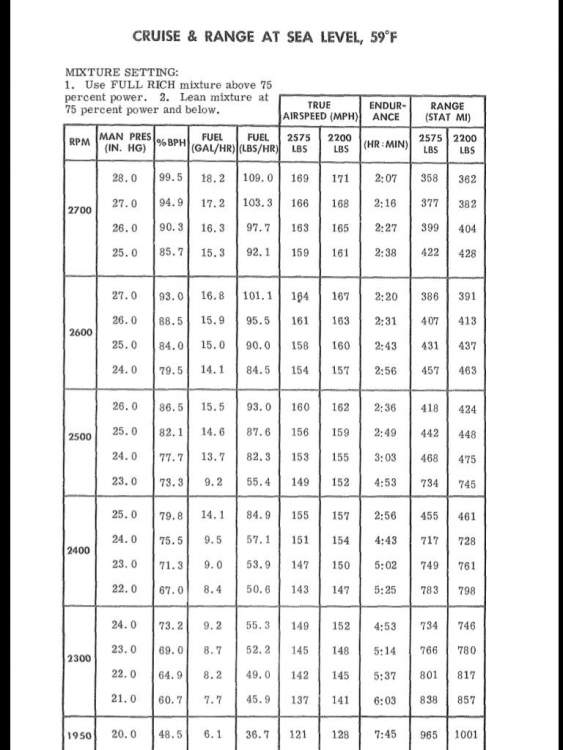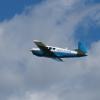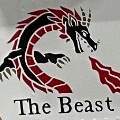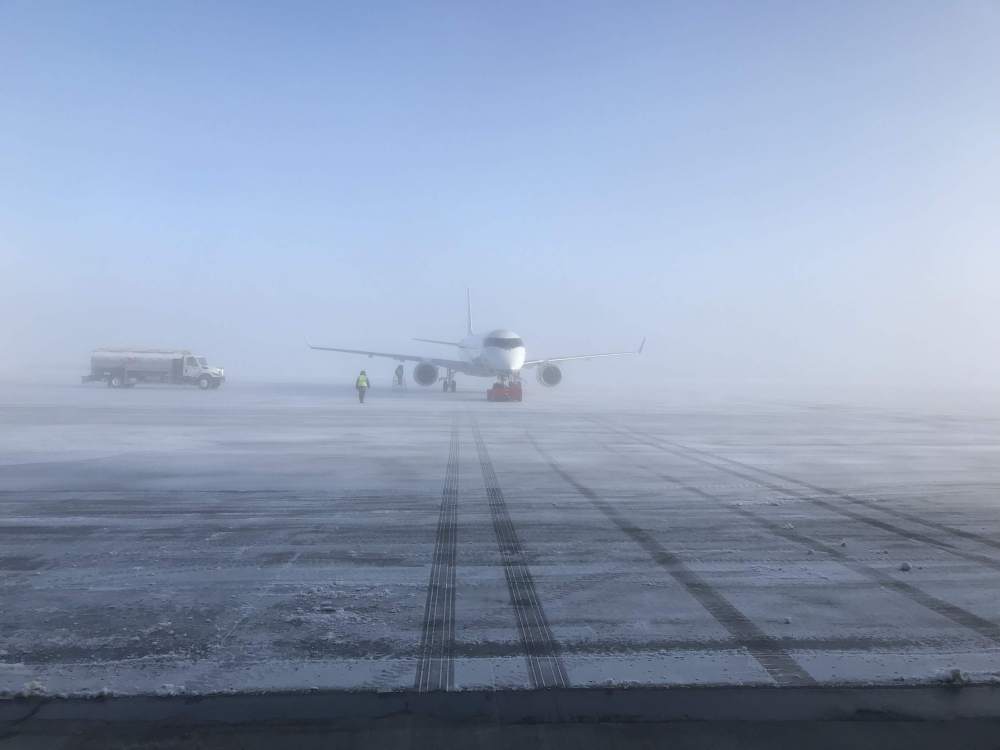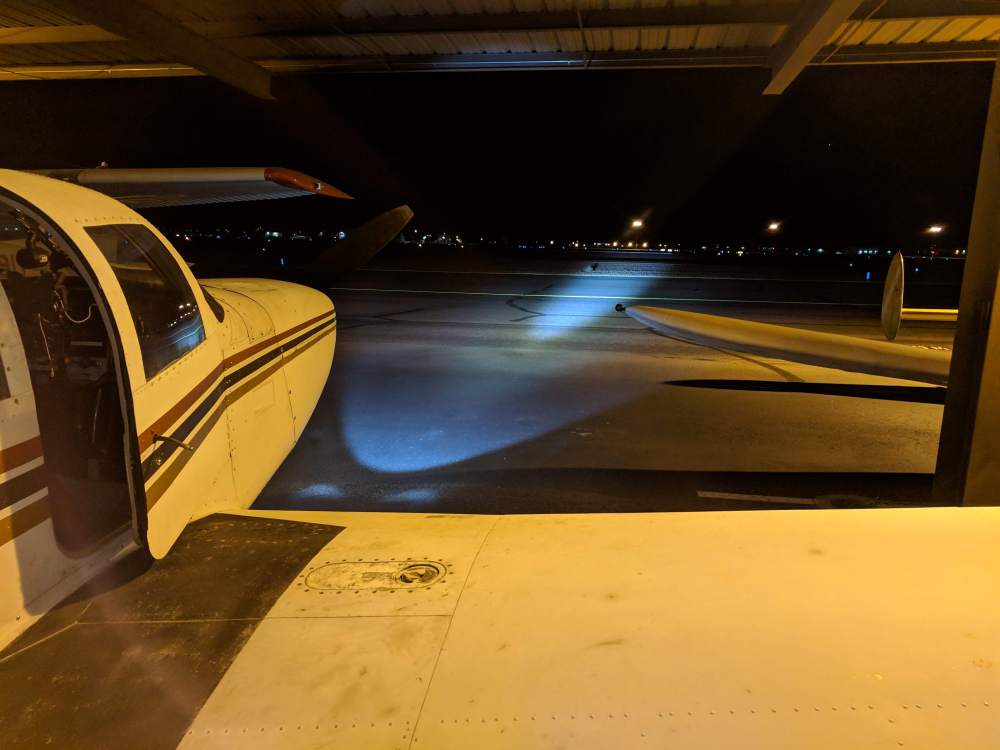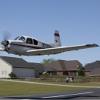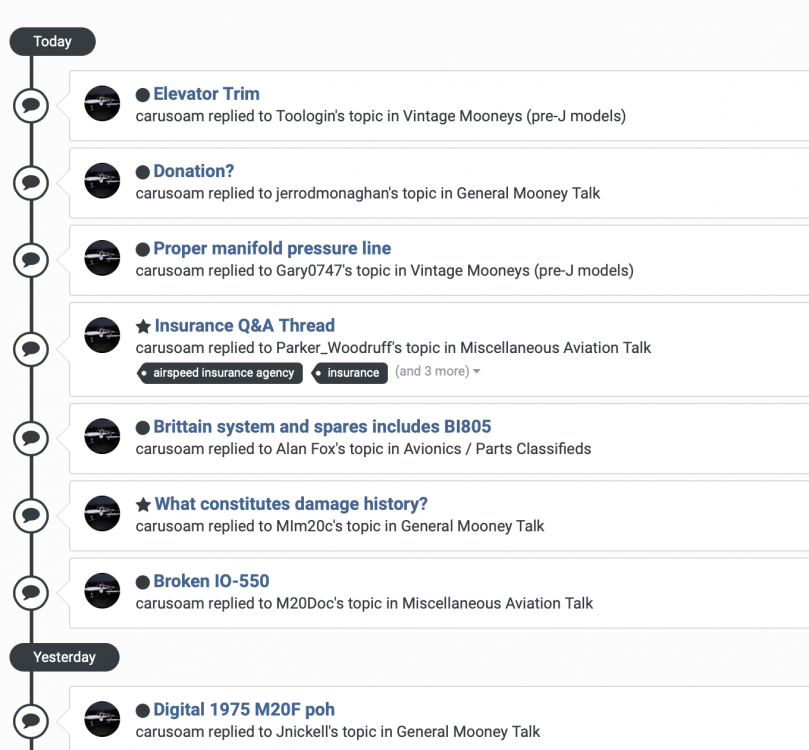Leaderboard
Popular Content
Showing content with the highest reputation on 03/09/2019 in all areas
-
I respectfully disagree. Although SOME models may NOT reflect value, I closed on a sale if my Rocket at the very end of 2018 and clearly got $10k to $15k more for my TKS equipped Mooney. I think it has more to do with specific models on the market rather than “no value” for TKS Mooney’s. On another perspective, I’ve bought and had 4 TKS Systems installed on Mooney’s, Bonanzas and my Lancair turbo-prop. Three inadvertent systems and one certified “known icing”. Of the four, only ONE left me stranded with a failed system in icing.......two times. Not what you are likely wanting to hear...... but both failures were on the FIKI Bonanza plane! Not anything to do with FIKI, but it proves there’s little advantage, other than “legal”, to FIKI over “inadvertent”. If “FIKI” is important to you, go for it. If a safe outcome to your flight is the “real goal”, apply some common sense to your flight planning rather than relying on “being legal”. And a last note, my Lancair “non-certified” TKS will out perform the “FIKI” Bonanza by 200%,. And I have 2.5 thousand hours flying in icing conditions in the Great Lakes region over the last 18 years with 4 different airplanes equipped with TKS. Tom8 points
-
This is a question that I get asked a lot and I'll be discussing this a bit more in my webinar next week. For the sake of argument, what is to follow assumes the aircraft is in visible liquid moisture. First, when the static air temperature (SAT) is warmer than 0°C, you shouldn't expect to accrete ice. Once the SAT reaches about -7°C, almost all aircraft will begin to accrete some ice. The important temperature for determining ice accretion, however, isn't the SAT, but the total air temperature (TAT) or what some refer to as the ram air temperature (RAT). The TAT is the temperature just above the skin of the aircraft. By the way, some aircraft show the TAT and then infer the SAT from that (honestly that's a more sensible approach). But just be careful...when you offer a PIREP, please use the SAT, not the TAT. The TAT is different on different parts of the aircraft. Excluding the prop for now, the immediate leading edge of the wing or horizontal/vertical stabilizer is typically the warmest. That's due to an effect called kinetic heating. Kinetic heating is primarily a result of both friction and adiabatic compression. As the wing moves through the air, the air just in front of the leading edge will "pile up" and compress causing a rise in temperature due to the laws of thermodynamics. While not exactly linear with airspeed, you can use 1°C rise for every 50 knots of airspeed as a quick estimate. So an aircraft traveling at 150 knots will see a TAT of 3°C warmer than the SAT. However, as you move away from the immediate leading edge, the kinetic heating drops off quite rapidly. If you've ever flown in visible moisture with an SAT of about -2°C or -3°C, you may notice horns building on the top and bottom of the leading edges with liquid dancing around in between. That's because the temperature at the immediate leading edges are too warm (above 0°C) for freezing to occur. But just above and below the immediate leading edge, it's cold enough to accrete ice. The blades of the prop are moving at a much higher speed and typically don't accrete ice out at the ends. Again, this is due to kinetic heating. Prop ice tends to collect at the hub and then progress outward...in colder temps, it can move out toward the ends which will decrease propeller efficiency. Losing thrust is very bad...it really limits your options very quickly. If there's anything you can add to your aircraft for ice protection, it's prop de-ice. Not to add complexity, but those surfaces with a high radii of curvature will collect ice more efficiently than a low radii of curvature. So, thin wings will collect ice more efficiently than fat wings. It also depends on the size of the drops. Except for the immediate leading edge, small drops tend to just flow over the wing and don't penetrate the boundary layer above the wing. Larger drops have more momentum and will typically penetrate the boundary layer further back behind the leading edge. In other words, there are other factors besides air temperature that come into play. One last point. It's really hard to define temperature. SAT is the undisturbed air around the airplane (when it's measured by an aircraft, it's usually referred to as the OAT). The SAT is typically measured by an immersion thermometer on many GA aircraft. On the ground in the shade, the thermometer might be very accurate, but when in the air, it may also suffer the same kinetic heating as the airplane's leading edges. When that immersion thermometer gets wet or accretes ice, evaporative cooling can quickly drop the temperature of the probe by several degrees almost instantly. Have you ever flown into a cumulus cloud (at temps above 0°C, of course) and saw the OAT drop by several degrees? That's a wet immersion thermometer. This is a long way of saying that if you are measuring a temperature of +2°C with your immersion thermometer and then fly into visible moisture, you should expect the OAT to drop a few degrees creating a risk of icing. BTW, airplanes don't feel wind chill. Evaporative cooling of moisture (or sublimation), yes, wind chill no. And please, never use the standard lapse rate to estimate the freezing level. When making weather decisions, if you catch yourself using the standard lapse rate, slap yourself in the face! Now, for the tables in your POH, sure the "departure from standard" applies to understand performance. But don't use the standard lapse rate for anything else. Hopefully that helps clear things up.6 points
-
Ironically you are both quoting the same thing (essentially) and getting different interpretations. Our current icing guidance stems from the Bell legal interpretation letter that was to revise the FAA's stance that for a couple years preceding it was pretty close to saying known icing conditions where as simple as visible moisture at and below 32F. But the Bell letter was in response to an up roar that such an interpretation was totally unreasonable. I thought Rags did a good job of summarizing (its the same way I look at it) and the more recent AD put out in 2015 is directly in response to the legal interpretation of 2009. In understanding known Icing conditions its important to digest this paragraph from the legal definition: The formation of structural ice requires two elements: 1) the presence of visible moisture, and 2) an aircraft surface temperature at or below zero degrees Celsius. The FAA does not necessarily consider the mere presence of clouds (which may only contain ice crystals) or other forms of visible moisture at temperatures at or below freezing to be conducive to the formation of known ice or to constitute known icing conditions. There are many variables that influence whether ice will actually be detected or observed, or will form on and adhere to an aircraft. The size of the water droplets, the shape of the airfoil, and the speed of the aircraft, among other factors, can make a critical difference in the initiation and growth of structural ice. Most flight manuals and other related documents use the term "known icing conditions" rather than "known ice," a similar concept that has a different regulatory effect. "Known ice" involves the situation where ice formation is actually detected or observed. "Known icing conditions" involve instead circumstances where a reasonable pilot would expect a substantial likelihood of ice formation on the aircraft based upon all information available to that pilot. While "known icing conditions" are not defined by regulation, the term has been used in legal proceedings involving violations of FAA safety regulations that relate to inflight icing. The National Transportation Safety Board (NTSB) has held on a number of occasions that known icing conditions exist when a pilot knows or reasonably should know about weather reports in which icing conditions are reported or forecast. In those cases the pilots chose to continue their flights without implementing an icing exit strategy or an alternative course of action and the aircraft experienced heavy ice formation that validated the forecasted danger to the aircraft. The Board's decisions are consistent with the FAA's long-held position in enforcement actions that a pilot must consider the reasonable likelihood of encountering ice when operating an aircraft. The reality is it all comes down to our planning and what we do when we encounter known icing. The key thing is when we venture into conditions where icing is possible, we need to have sure thing exit strategies available to us, such as descending to warmer air. And we can't continue on failing to take action before it becomes too late. But if we venture into possible icing conditions without any possible escape plan and/or wait too long to take any action we're pretty much asking to be made an example of enforcement action; if we actually survive the experience.5 points
-
I've spent this week in my hangar stripping down my M20E for the annual inspection by @AGL Aviation. Lynn will inspect early next week and it will take me a couple of days to put everything back together before heading to KFMY to take in some Red Sox games. I want to share a few kudos that might be of interest to others here: Hawk Aircraft Painting did a great job painting the plane in 2018. (This is the first annual since picking up the plane.) Every nook and cranny that I got into had been properly prepped and painted. It is more than a pretty face. The PFS exhaust has 488 hours on it (installed June 2012). A pressure check is required (or recommended?) @ 500 hours so I removed the system and disassembled. The whole system looks new! I took a scotch pad to the heater shroud to remove baked on spilled oil. Looking spiffy. No kudos to the dufus who changes the oil and oil filter and manages to spill some oil every time. (That would be me. ) The Tempest fine wire spark plugs (same age as PFS) look fine. I suppose they'll last as long as the engine. Mooney built a very fine piece of machinery, even in the mid '60s when they were cranking out 750 planes a year. While the insides of Romeo Whiskey do not look as new as the outside, everything looks solid and very much "airworthy" and "worthy of future upgrades.4 points
-
This is the first race weekend of the Motocycle World Championship called MotoGP. If you have never seen it, it is worth the hour spent watching it for the first time. It is not Formula1, not Indy car, definitely not Nascar. If you are any kind of racing fan, it is one of the better series to watch for pure racing action. Something I like, for what that is worth. DF3 points
-
3 points
-
2 points
-
Slide on over Birmingham September 20-22 for the MotoAmerica race at Barber race track or, if you are just a motorcycle geek, come out on October 4-6 for the Vintage Motorcycle Festival. If you have never seen the museum there, you need to check it out. https://www.barbermuseum.org/2 points
-
Definitely not an expert but from what I've read... Both the Trig TT31 and the KT74 are slide in replacements IF you don't care about ADS-B. That is, you can get a new mode S transponder to replace your mode C for almost no install cost. However, I've read what you've read; you need to install speed switch and also run a wire from your GTN to the transponder. That means there will be some labor cost. Maybe less than a GTX335, maybe not. As for ghosting, we have not seen it on our airplane with a GTX345 and it sure is nice having ADS-B in traffic. If you are looking for minimum cost to comply with ADS-B, you might look at the Garmin GDL-82 (about $1800) or the Uavionix Skybeacon (about $1900). I've read reports of the Skybeacon being installed by an A&P in less than 3 hours rather than having to go to an avionics shop. And I think they are close to certifying their tail mounted beacon too. The only problem (?) with those is that you still have that old KT76A transponder installed that you have to maintain. However, when that KT76A fails, you could probably do the KT74/TT31 slide in replacement. Again though, I do love the ADS-B traffic.2 points
-
One other thing on the topic of integration. As gsxrpilot points out, this stuff will integrate to some level. Buying all Garmin will guarantee everything will integrate but will typically cost you more if you want additional features. I’ll give you an example. I fly the corridor between Washington & Philly quite a bit, especially during the summer on my way down to lower Delaware and Ocean City Maryland. On VFR days, it is jam packed with VFR planes doing the same thing. And then on top of everything else, you have Philly arrivals descending through that area. I wanted an ADS-B solution but also TAS capability. I also wanted a unit that also had an internal GPS and wasn’t dependent on my GTN. The corridor is ironically a non-mandate area and I expect there will be many non-compliant planes still trans versing the area after January 2020. I found that you can purchase a version of the Garmin 345 with an internal GPS. Installed price at the time was $8500. It was not however TAS capable. To get that capability, I would need to add a GTS 800 TAS. That box is another $10k plus installation. I found that the L-3 9000+ installed, with antenna, was $10k. The L-3 has an internal GPS, has TAS and is able to show everything on its own display. Trade offs? I see TIS-B and TAS targets on the GTN. I don’t see weather products on the GTN. The L-3 integrates nicely with my Aspens. All traffic and weather products display on the Aspens as well as on the L-3’s own display. Side benefit. L-3 manufactures the WX-500. So, my WX-500 also displays on my 9000+ in addition to the GTN and the Aspens. There are some real benefits to an all Garmin suite. There are also some real costs associated with it. I think Don mentioned he has over $100k in his panel. For a Bravo that he intends to keep, makes all the sense in the world. But like Paul, my panel was considerably cheaper than Don’s and I have functionality that anyone could want in a Mooney. Sent from my iPad using Tapatalk Pro2 points
-
This is some of the best advice I’ve heard on this board.....heck... some of the best advice I’ve heard in my 20+ year career as a professional pilot. >>>>> If a safe outcome to your flight is the “real goal”, apply some common sense to your flight planning rather than relying on “being legal”.<<<<2 points
-
Big Blue has been doing some pretty impressive things in the realm of customer support and customer service lately. I think we ForeFlight users may be surprised at how well this goes for us. One man's opinion. Cheers, Rick2 points
-
Here's another perspective Paul - fewer panels and reduced install time produces more profit, because the price certainly won't be reduced. I'm inclined to believe it was a business decision before they went for certification. My non-FIKI system does an awesome job of spreading TKS fluid everywhere I want it on my TLS. Anyone care to follow me out of the box on this topic? Acknowledging the legalities involved, what if we looked at this purely from a technical/practical perspective and determined what is required to make the non-FIKI equivalent to the the FIKI? CAV won't do it, it isn't in their best interest. But I myself might, given the new climate in the FAA certification environment. Just a thought. Probably can't be done without great expense. Legally. I'll probably get a spanking for even suggesting this... Cheers, Rick2 points
-
Did you miss this part? With all due respect to the fact that "shit happens", I'm not naive about it, and you are of course, very correct that human's err all the time, and no one is immune. But all things being equal, I'd rather use a shop where I have a relationship and a history of great service, then one where I'm going to MooneySpace for a second opinion.2 points
-
So true, no shop escapes at least the occasional complaint. As long as annuals and maintenance is done by humans there will be mistakes made and omissions. The very best shops in the country are not immune. It happens. The best of the best shops though, adopt a QA process of having a second set of eyes check/inspect the work done by another tech. This is really the best defense we have but for the most part only the larger shops can do that. The smaller shops successfully do the same thing with discipline that comes from years of experience of the need to check and re-check their work. I say that because some small shops have some excellent track records as well. Despite how much you may trust your shop and mechanic for your maintenance I hope you all follow the trust but verify approach. By that I mean we really need to treat every flight right after extensive maintenance as a test flight with crew only. A pilot that picks up his/her plane after annual, often on the weekend, and launches into low IFR is more than just naive about the risks they're taking. At least do a thorough pre-flight and run-up paying attention to your engine analyzer and then a lap in the pattern VFR to check out the plane; preferably during business hours so the shop can address anything that just popped up and keep everybody happy. (Like @David_H stall horn issue, but David caught it and what he could on the pre-flight which is the point unlike some stories I've read here such as pilot that took to the runway to takeoff without any oil pressure and many more like that....Yeah the shop really screwed up on that one too!).2 points
-
I think the answer was stated above- fewer overall panels for the same coverage- which reduces install time, and probably makes install easier... since the total number of panels changed between their “earlier” non-fiki design and the fiki certified design- there is probably no way to legally certify the “old” panel setup- despite identical coverage, flow rates and ice capability. thats my hunch anyway.... one easy way to know the flow rates are the same- the advertised capacity for the tank is the same. The advertised run time in the de-Ice and anti-ice is the same. And the pump is the same. Goes to reason that if you run out of fluid at the same time, using the same pump, at the same settings... then the flow rates would be the same (since the coverage is the same).2 points
-
Well said. Icing is nuanced, frustrating to predict, and sometimes dangerous. It’s Difficult to teach and everyone can form very different opinions/techniques while using the same guidance. I thought you summed it up well.2 points
-
The only requirements for an annual are outlined in FAR 43 Appendix D, and they aren't constrained by the manufacturer's annual checklist. In other words, complying to the manufacturer's annual checklist is not required. Many do as good practice, but it is not required. If you want the MM used as the annual checklist, or something other than 43 App D, that should be discussed ahead of time with the IA. The only requirement is that the items in 43 App D can't be skipped.2 points
-
Well, I share your pain! I own a M20C 1970. I had it since 2003 and my high CHTs, I particular #3 has always been a headache. I had readings similar to yours. I did everything! So let me walk through some of the things I did: a) doghouse: I replaced my old doghouse and baffling with a new one. Results: marginal (slightly lower CHTs but still above 450) baffling: I replaced all the baffles in particular around the cowling entrance. results: marginal c) cowling mod: I changed the air inlet form (droopy nose was replaced with a newer looking model). Results: marginal d) carburetor: you have to get a high fuel flow on take off (16.5 gal at least) to ensure cooling. I overhauled the carburetor and had it checked to make sure it was up to standards. Results: significant. First time CHT really changed for better. I still got 430 on number 3 but much better than 470. e) technique: I applied a take off and climb procedure similar to the one described above, ensuring higher speed before climbing and playing with the throttle and RPM. Results: good, on average a 15 degree lower CHT d) clean up inside cowling: you have to avoid having hoses interfering with the airflow inside the cowling. Results: marginal e) cowlflaps: make sure that the cowlflaps aperture is large enough. Results: marginal So my experience has been that (besides the carburetor and technique) there is no silver bullet but that all these measures help keeping the CHTs low. I hope this helps you and does not get you even more confused. Oscar Sent from my iPhone using Tapatalk Pro2 points
-
2 points
-
I'll just say if you're on MooneySpace second guessing or checking up on your shop... you've got the wrong shop. If I couldn't trust the shop doing my annual... I'd be hesitant to fly the plane and would certainly find a different shop.2 points
-
2 points
-
Glad to have tablets and smartphones running various apps to aid in flight. Glad that Boeing values the tools highly enough to buy a respected developer. Glad that Boeing has spent decades in fully CAD design of aviation innovations. Glad that I no longer have to mess with paper charts while hand-flying behind a single mechanical gyro powered by a single vacuum pump. Yesterday I filed my flight plan on my iPhone while sitting in the FBO lobby. Then I walked to the plane and used the iPhone to send the full-route plan wirelessly to the panel avionics. My late father used a clock, compass and kneeboard in his F4U to navigate on long submarine patrol flights. He always found the carrier (or I would not be here) but he certainly was impressed with the early handheld GPS I showed him in the 1990s. “Man, I wish I’d had one of those in the Corsair,” he said.2 points
-
Josh Flowers, the CFI, is a good friend of ours here in the Austin, TX area and many of us have flown with him. In fact we can say we all knew him way back when he was just learning to fly. He's a pretty low time CFI, but a CFI none the less and does have plenty of Mooney time. My thought watching the video was that I should invite him to go fly with me, and show him how to properly fly and engine manage a turbo Mooney But he does have a great YouTube channel and his video editing skills are legit. He's got a huge following of young aspiring pilots who follow his channel. And that's positive for all of us.2 points
-
2 points
-
1 point
-
If the VGs are doing their job, the stall should occur at a higher AOA. Many VG wing installations have corresponding installations on the underside of the horizontal stab.1 point
-
Paul Maxwell at KGGG Te number at DMax is:903-643-9902 he may still have some available last quote approximately $27000, I’m not sure that’s correct I had mine done last year by Paul1 point
-
@alextstone unlike the 730/830 some of the 700 units do not have the provisions for FF. Off memory you need a flexible wire coming out the back of the unit for the fourth connector. Might want to check first.1 point
-
That's the engine eject switch. If you have any engine troubles, it activates explosive bolts and throws the engine clear of the airframe. Also, I may not know what I'm talking about. :-)1 point
-
87Q is actually on it's 4th KT74, all under King's warranty. The 2nd was a failed attempt to improve the dim display. Even a copilot in front of, and level with, any 4 of our KT74s could NOT easily read the dim display. The 3rd was a loaner, after the code input failure, to be able to navigate the NY & DC traffic areas and return home. The 4th and current was to return the loaner to King. Here's an interesting side note: Months after the last KT74 exchange, 87Q appeared on Flightaware in several west coast flights, while 87Q remained in its AWM hangar. After some detective work I was able to trace it to an aircraft that had received a KT74 from King. That aircraft had installed a unit that retained our ICAO code. I assumed it was one of the exchanged KT74s that King hadn't bothered to wipe clean. Neither the aircraft owner or the avionics shop had programmed the KT74 for the new aircraft. I had to track them down and ask them to remove 87Q's code (the FAA was no help in this activity).1 point
-
There are two different carbs for the O-360, the difference seems to be mostly in the jets. If your carb has the smaller jets, it won't have high enough fuel flow. That's all I remember right now. Searching may reveal the details, but it may not. If you don't match book fuel flow, have your A&P adjust it. If he can't adjust it high enough, do some carb research.1 point
-
I took Scott’s skew t course and it’s worth every cent , I need to review it often do to its complexity for some of us more challenged folks1 point
-
Having seen both in action, I’d take the 650 over the 530 any day. Get the 345 and you can port weather and traffic over to Foreflight. Only wrinkle I could see is if Boeing decides to change their relationship with Garmin and not support FF any longer (doubtful). Sent from my iPad using Tapatalk Pro1 point
-
1 point
-
Since the latest system update, the GTN 650 is like a mini GTN 750. You can select the type of keyboard you want through a simple selection. No doubt about it, I am pro Garmin, the reason being that if you have a panel made up of products from one manufacturer that you can depend upon, then not only is interfacing simple, but upgrading is much easier. A simple example of that is the ease and cost benefit of upgrading the G500 to the G500 TXi. Mine was done in less than a week. While I want a fair deal, I am done penny pinching when it comes to outfitting my airplane. I am constantly reading on this forum and BeechTalk about all the issues people have when they try to save a few dollars and buy from multiple vendors and wonder why everything doesn't work together. As a former electrical engineer, it's not surprising to me at all. In your lifetime is a $2,500 saving worth not having the best? While the GNS 530/430 were state of the art in their time, they really don't hold a candle to the newer GTN 750/650 that Garmin seems to update on a regular basis. I've been flying for over 50 years now, and still get a thrill every time I fly my upgraded panel. I hope you choose to do the same.1 point
-
1 point
-
Hard to say, really- could be that the thicker titanium was required on other installs (Cessna, beech)... or that the panel length was changed to conform to other installs... basically standardizing across the line, thus reducing overall costs. I doubt though, that if CAV states the flow rates are the same, and the coverage is the same, that they are lying to us about it. And the fluid is not different between the systems. My guess, and it’s just that, a guess, is that the “new panels” were made to increase the company’s efficiency in some way or another (install, standardization, etc)... and it happened to coincide with the faa certification. Since they only installed the newer panels (fewer panels overall required, but same coverage) on their fiki demo rig, it would go to reason that they couldn’t use the older panels on a fiki install, despite the same performance (which the company states is true- same performance between the two). its also worth noting that CAV no longer makes the “non-fiki” install... so I’m guessing the older style panels became obsolescent/orphaned for whatever reason, hence no more non-fiki installs (or could just be due to lack of demand).1 point
-
What does it say the SM was used for? It could be that some procedures were used, e.g., rigging the gear during the required gear swing, that have to be done per the SM. Assuming much beyond that kind of thing may lead to a misunderstanding that is counterproductive. It is pretty common for annuals to be done that aren't compliant with the factory checklist, so following the factory checklist can't really be considered a standard practice. What's in the FAR should absolutely be expected, as that's a regulatory requirement, but beyond that if there's something specific that is expected it should be stated ahead of time. It's certainly reasonable to ask what was actually done or not done, though, and what the statement in the logbook meant regarding using the SM.1 point
-
Yes, that was my main problem with my old carb. I checked with the guys from savvyanalisys and they told me that the acceptable fuel flow was between 16 and 18.5. With my old carb I hardly got 15 on take off!!! Then overhauled carb got me 16.5 and often even 17.5. So big improvement. Sent from my iPhone using Tapatalk Pro1 point
-
The reference to the S&M manual wasn't for the checklist but how the maintenance was done.The Mooney 100 hr/Annual checklist is a separate document. The SM does include some detailed items though on various maintenance intervals including the 100 hr but is not as complete as the Mooney checklist. A reference to the checklist is not required either. As @EricJ explained above shops are free to conduct an annual by whatever checklist they want to go. I'd assume Mooney expects MSC to use their checklist as a condition of being recognized as a MSC - but that is a question for Mooney or an MSC. With the EI R1 tach I wouldn't expect to see any time added. You can easily warm it up under 1300 and then do a run-up at 1700 in under a minute or two at most. But an annual to the reg's means nothing more than an annual was completed. Its best to talk to the shop in advance about what their checklist is. One can always discuss using the Mooney Checklist with any IA or shop that is doing your annual - rather than assuming.1 point
-
Thanks for the comments everyone. As stated earlier in the thread, per the EI manual, the R1 Tach does not begin recording until after 1300 RPM. I must admit that I wasn't aware of this. That said, it appears to be possible for the engine to be warmed up below 1300 RPM without registering on the Tach. The Logbook sign-off explicitly states that the Mooney S&M Manual was used. I still fail to understand how the S&M manual could've possibly been followed without showing time on the Tach since several checks require the engine to exceed the threshold RPM. Many of us do not hold an A&P or AI certificate and depend on the honesty of our Mechanics to professionally do their jobs. When we fill the plane with people and cargo, the safety burden shifts wholly onto the shoulder of the PIC. It's my opinion that one shouldn't be able to go behind a professional shop and find multiple omissions.1 point
-
Remove the button and store it in the ashtray. It comes out easily. I am assuming you have the pneumatic button vs. The electric..1 point
-
1 point
-
1 point
-
1 point
-
I would be very...very...very....very....surprised if contaminates made it to the prop hub. I’m betting that your previous mechanic had a better understanding of how a CS Propeller works and that is why he elected to simply flush the hub.1 point
-
Given that you already have the 700 and you want to upgrade to the full Garmin TXi in a few years I would not go with the 900. The 900 is an awesome unit but if it were my aircraft I would just save the $$ for the Garmin and upgrade the 700 to the EDM730/830, if you were not planning on the Garmin I would say go with the 900/930. I originally had the 700 in my J and upgraded it to the 830 by changing the display and adding the MP and RMP sensors, everything is plug and play with your existing harness for the 700. How much does your shop want to charge for the used 830 and do you have the space in the panel for the 730/830? If I understand your post correctly you already have the EDM 700 and the associated probes and sensors correct? The install is real easy, I did it myself and had my friendly A&P/IA sign it off. I am a JPI dealer and I am happy to answer any questions you may have even if you don't buy from me.1 point
-
The EDM 700 is a good box and can have fuel flow added to it. If you currently have a Shadin for FF, there is a method to split out from the fuel transducer into a JPI box. Pritch is correct about the 730/830. I did exactly that with my upgrade from an 800 to an 830. His suggestion of calling JPI is a good one, and figure out what options you have in you existing 700 before you call. There is probably a list of what it contains on the 337 from when it was installed. That would be a good place to start.1 point







